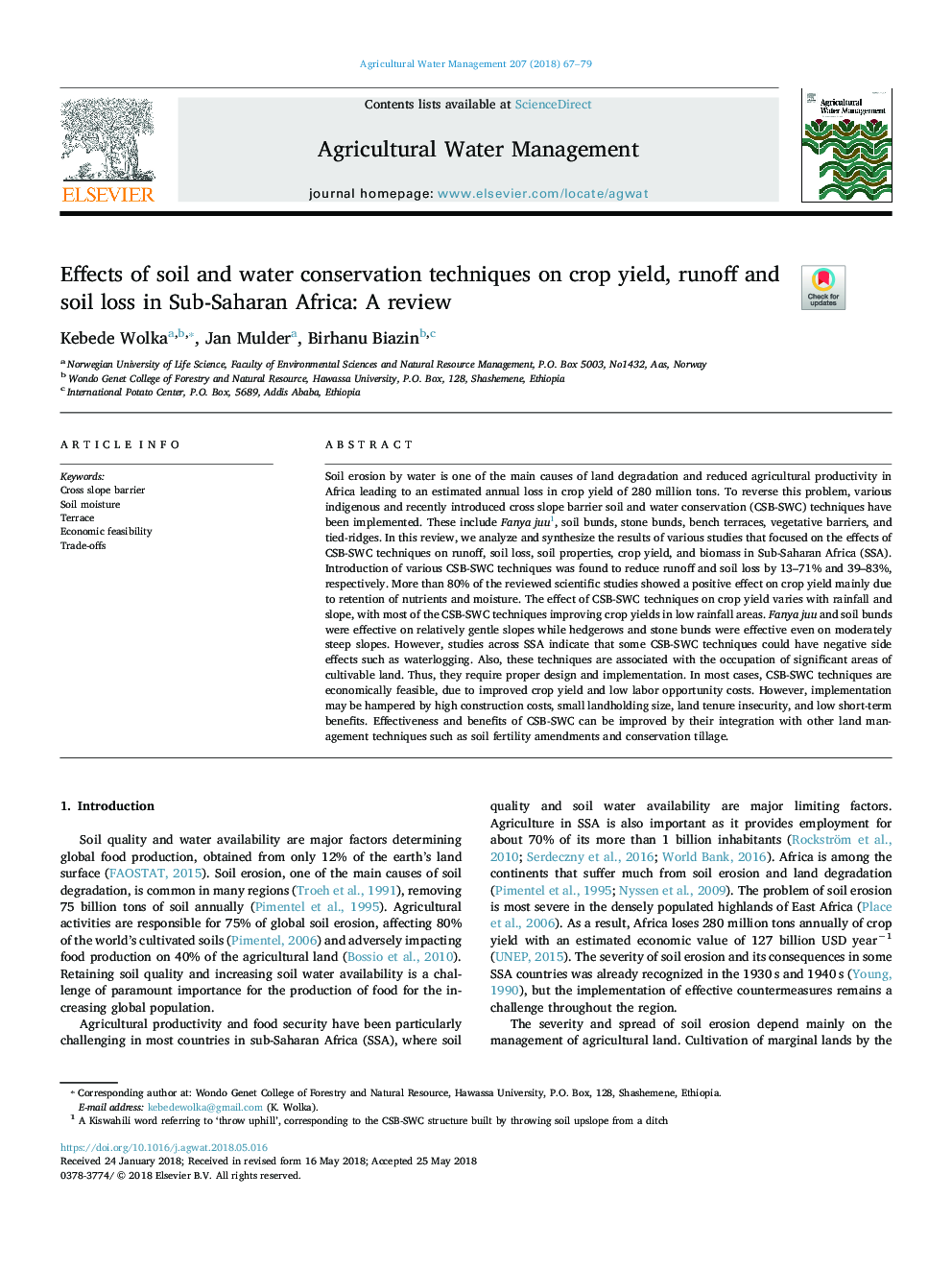| کد مقاله | کد نشریه | سال انتشار | مقاله انگلیسی | نسخه تمام متن |
|---|---|---|---|---|
| 8872832 | 1622873 | 2018 | 13 صفحه PDF | دانلود رایگان |
عنوان انگلیسی مقاله ISI
Effects of soil and water conservation techniques on crop yield, runoff and soil loss in Sub-Saharan Africa: A review
ترجمه فارسی عنوان
اثر تکنیک های حفاظت خاک و آب بر عملکرد محصول، رواناب و تلفات خاک در کشورهای جنوب صحرای آفریقا: بررسی
دانلود مقاله + سفارش ترجمه
دانلود مقاله ISI انگلیسی
رایگان برای ایرانیان
کلمات کلیدی
مانع شیب صلیب، رطوبت خاک، تراس، امکان سنجی اقتصادی، تعطیلات،
موضوعات مرتبط
علوم زیستی و بیوفناوری
علوم کشاورزی و بیولوژیک
علوم زراعت و اصلاح نباتات
چکیده انگلیسی
Soil erosion by water is one of the main causes of land degradation and reduced agricultural productivity in Africa leading to an estimated annual loss in crop yield of 280 million tons. To reverse this problem, various indigenous and recently introduced cross slope barrier soil and water conservation (CSB-SWC) techniques have been implemented. These include Fanya juu1, soil bunds, stone bunds, bench terraces, vegetative barriers, and tied-ridges. In this review, we analyze and synthesize the results of various studies that focused on the effects of CSB-SWC techniques on runoff, soil loss, soil properties, crop yield, and biomass in Sub-Saharan Africa (SSA). Introduction of various CSB-SWC techniques was found to reduce runoff and soil loss by 13-71% and 39-83%, respectively. More than 80% of the reviewed scientific studies showed a positive effect on crop yield mainly due to retention of nutrients and moisture. The effect of CSB-SWC techniques on crop yield varies with rainfall and slope, with most of the CSB-SWC techniques improving crop yields in low rainfall areas. Fanya juu and soil bunds were effective on relatively gentle slopes while hedgerows and stone bunds were effective even on moderately steep slopes. However, studies across SSA indicate that some CSB-SWC techniques could have negative side effects such as waterlogging. Also, these techniques are associated with the occupation of significant areas of cultivable land. Thus, they require proper design and implementation. In most cases, CSB-SWC techniques are economically feasible, due to improved crop yield and low labor opportunity costs. However, implementation may be hampered by high construction costs, small landholding size, land tenure insecurity, and low short-term benefits. Effectiveness and benefits of CSB-SWC can be improved by their integration with other land management techniques such as soil fertility amendments and conservation tillage.
ناشر
Database: Elsevier - ScienceDirect (ساینس دایرکت)
Journal: Agricultural Water Management - Volume 207, 30 August 2018, Pages 67-79
Journal: Agricultural Water Management - Volume 207, 30 August 2018, Pages 67-79
نویسندگان
Kebede Wolka, Jan Mulder, Birhanu Biazin,
